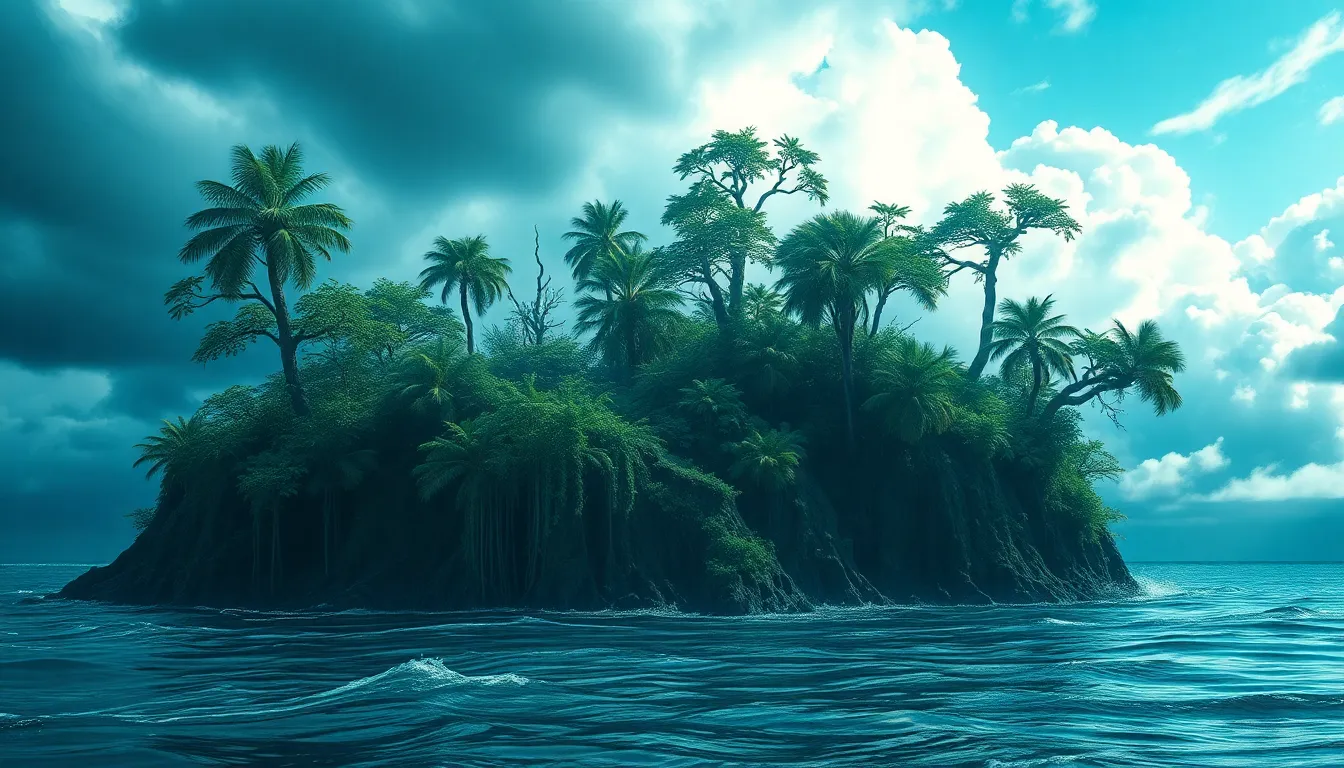Flood Myths from the Pacific Islands: Tales of Water and Survival
I. Introduction
Flood myths are integral to the cultural narratives of societies worldwide, representing humanity’s struggle against nature’s overwhelming forces. In the Pacific Islands, these tales often reflect the unique geographical and environmental context of island life, where water is both a vital resource and a formidable adversary.
The Pacific Islands, a vast region encompassing thousands of islands across the ocean, are characterized by their diverse cultures, languages, and ecosystems. The significance of water in these societies goes beyond mere survival; it embodies spiritual beliefs, communal identity, and resilience in the face of adversity. This article explores the themes of water and survival as depicted in the flood myths of the Pacific Islands, highlighting their cultural importance and relevance today.
II. The Role of Water in Pacific Island Cultures
Water in Pacific Island cultures holds profound symbolic and practical significance. It is often viewed as a life-giving force that sustains communities, but it can also represent danger and destruction. The duality of water’s role is reflected in various indigenous beliefs:
- Life Source: Water is essential for agriculture, fishing, and drinking.
- Spiritual Symbol: Many cultures perceive water as a cleansing and purifying element.
- Destructive Force: Floods and storms pose major threats to communities living close to the sea.
The ocean and rain significantly impact daily life, influencing everything from food sources to cultural practices. Additionally, Pacific Island communities face environmental challenges, such as rising sea levels, climate change, and natural disasters, which further complicate their relationship with water.
III. Common Themes in Pacific Flood Myths
Pacific flood myths often share common themes, reflecting the universal human experience of dealing with catastrophic events:
- Catastrophic Floods: Many myths recount floods as a punishment from the gods or a natural calamity, emphasizing the fragility of human existence.
- Survival and Resilience: Central to these tales is the theme of survival, showcasing the resilience of humanity in overcoming adversity.
- Human-Deity Relationships: The interaction between humans and divine beings plays a crucial role, illustrating moral lessons and cultural values.
IV. Case Study: The Flood Myth of Samoa
The Samoan flood story narrates a time when the world was flooded due to the anger of the gods. In this myth, a handful of individuals are saved by building a large canoe, showcasing themes of ingenuity and resilience. The story emphasizes the importance of harmony with nature and respect for the divine.
Culturally, the Samoan flood myth serves as a moral lesson about the consequences of human actions and the need for a balanced relationship with the environment. Compared to other regional narratives, the Samoan myth reflects unique aspects of its cultural heritage, particularly its emphasis on community and cooperation.
V. Case Study: The Hawaiian Flood Myths
Hawaiian mythology features several flood stories, often involving deities such as Kanaloa, the god of the ocean. In one popular tale, a flood is sent to cleanse the earth, and only a few chosen individuals survive. These stories illustrate the dual nature of water as both a destructive and purifying force.
The role of Kanaloa and other deities in these myths highlights the significance of environmental stewardship. The moral lessons derived from these narratives often encourage respect for nature and an understanding of the interconnectedness of life.
VI. Case Study: The Flood Legends of Fiji
The Fijian flood myth tells of a great flood that wiped out most of humanity, with only a few survivors escaping to higher ground. The characters in the myth often represent various aspects of Fijian culture, and the narrative intertwines myth with historical events.
This interplay between myth and history strengthens community identity and heritage, reminding Fijians of their past struggles and triumphs. The myth serves as a cultural anchor, fostering a sense of belonging and continuity among the people.
VII. The Impact of Colonization on Flood Myths
The colonization of the Pacific Islands led to significant changes in storytelling practices, as external influences introduced new narratives and ideologies. Traditional flood myths often blended with Western narratives, creating hybrid stories that reflect both indigenous and colonial perspectives.
Preservation efforts for indigenous myths have become increasingly important, as many traditional stories face the risk of being forgotten. Community initiatives and cultural programs are crucial in maintaining the integrity of these narratives amidst changing cultural landscapes.
VIII. Modern Interpretations and Adaptations
Contemporary artists and writers are reinterpreting flood myths, incorporating modern themes and concerns such as climate change and environmental justice. These adaptations breathe new life into ancient stories, making them relevant to today’s audiences.
The relevance of these myths in the face of global environmental issues highlights the enduring power of storytelling. Education plays a vital role in keeping these narratives alive, ensuring that future generations understand their cultural significance.
IX. The Future of Flood Myths in Pacific Islands
Globalization poses challenges to the preservation of flood myths, as cultural erosion threatens traditional practices and storytelling. However, there are also opportunities for revitalization through community engagement and cultural exchanges.
Preserving oral traditions is essential for future generations, as these stories are not only cultural artifacts but also sources of wisdom and identity. By fostering an appreciation for these narratives, communities can ensure their survival in an ever-changing world.
X. Conclusion
This exploration of flood myths from the Pacific Islands reveals the rich tapestry of cultural narratives that speak to humanity’s relationship with water. These stories highlight themes of survival, resilience, and the intricate ties between people and their environment.
As we reflect on the enduring power of these myths in shaping identity, it becomes clear that they offer valuable lessons for navigating contemporary challenges. A call to action is necessary: we must prioritize the preservation and celebration of these narratives, ensuring they continue to inspire and educate future generations.



